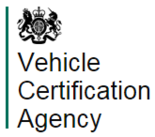Services
The services that VCA provide include type approval testing and certification for all road-going vehicles, including cars, trucks, motorcycles, agricultural vehicles, buses and coaches, ambulances, fire engines and motor caravans, and replacement part systems and components. [2]
VCA are also responsible for the production of the new car fuel consumption and emission figures. This information is made available through an online database containing the latest fuel consumption and emissions data for new cars. The site also includes tools to help users to calculate vehicle tax. [3]
This page is based on this
Wikipedia article Text is available under the
CC BY-SA 4.0 license; additional terms may apply.
Images, videos and audio are available under their respective licenses.
